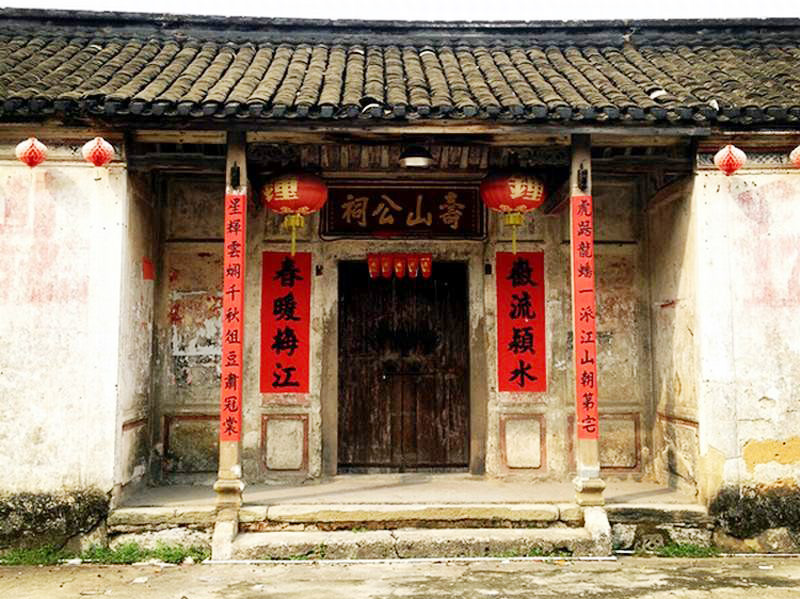Ancestral halls: windows into Hakka culture

A well-preserved ancestral hall named “shoushan” in Meizhou City
The Hakka people represents a unique branch of the Han people. In particular, the ancestral Hakka halls are an important window into Hakka culture. These ancestral halls are not mere buildings, instead they are carriers of rich cultural heritage. Without understanding Hakka ancestral halls, it is difficult to understand Hakka culture.
Lin Xiaoping, director of the Hakka Studies College at Gannan Normal University, believed that the Han people in Central China gradually migrated to a triangular area between Jiangxi, Fujian and Guangdong provinces as a result of war and famine. Gradually they integrated with the indigenous She and Yao peoples, forming a unique and stable branch of Han people known as the Hakka people. Over 80 million Hakka people are estimated to live all over the world.
The Hakka culture is believed to have best preserved the legacy of the original culture of Central China, where Chinese civilization originated. Hakka ancestral halls are an important representative of the culture of Central China. More than 10,000 ancestral halls are preserved in areas influenced by Hakka culture, which is a rare phenomenon for other branches of the Han people.
Establishing halls to offer sacrifices to ancestors was once the privilege of the imperial nobilities. These rules were later changed by the rulers of the Song Dynasty (960-1279) following the advice of Confucian theorists, including Zhang Zai and Zhu Xi. The building of ancestral halls boomed as of the mid-Ming Dynasty. According to Lin’s research, more than 80 percent of the existing ancestral halls were built in the Ming and Qing dynasties.
Currently, most ancestral halls in Hakka regions have been restored, especially in Meizhou City, known as the “global capital of Hakka,” which is the source of many Hakka diaspora abroad. When visiting their ancestral home, these China diaspora donated money to the restoration of the hall of their ancestors.
Ancestral halls were a central part of Hakka settlements. Lin said that they were used by Hakka families to offer sacrifices to their ancestors, discuss major issues and establish family schools.
The annual ritual of offering sacrifices to ancestors, on the one hand, involves showing respect and praying for blessings and protection coming from their ancestors. On the other hand, the ritual also bonds family members together, solidifying the entire family unit.
Education is another important function of an ancestral hall. Hakka communities have cultivated many educated people who went on to serve society, which was closely related to the Hakka tradition of valuing education and family schools. Thousands of ancestral halls have been used as school rooms. Even today, some are still in use.
The schools situated at the ancestral halls were meant to improve the cultural education of the young people of the family and elevate the reputation and position of the family. The Hakka people spent a great fortune hiring learned teachers. The ancestral hall schools played an undeniable role in improving the humanistic spirit of Hakka people, Lin said.
As a symbol of traditional Hakka clan society, an ancestral hall was not only a place where memorial tablets of the ancestors were placed and the activities of offering sacrifices to the ancestors were conducted. It was also a site where the family members discussed family issues and conducted the wedding and funeral ceremonies. The ancestral hall was not only the power center of the clan but also the cultural center of the settlement.
Take for example, the weddings of the Hakka people. Brides usually should bid farewell to her ancestors at the ancestral hall. When she came to the family of the groom, the first thing that she should do is to offer sacrifices to the ancestors of the groom. After that, the wedding can be held. “In some areas, the brides are supposed to take off their shoes before leaving her family so that no soil will be taken away,” Lin said. The soil symbolizes good fortune. The family will be poor if the bride takes away the soil of her family, Lin added.
